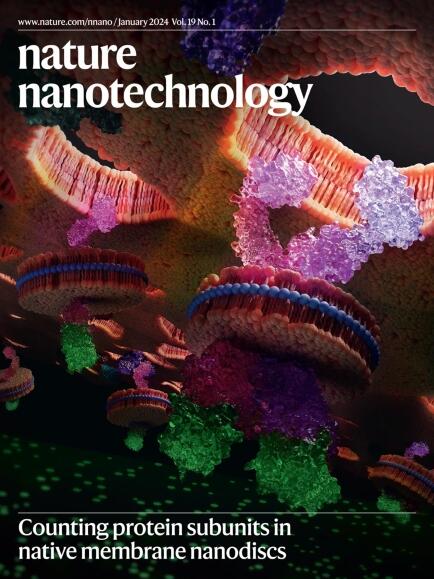基于纳米孔的酶联免疫吸附法检测癌症生物标志物
IF 34.9
1区 材料科学
Q1 MATERIALS SCIENCE, MULTIDISCIPLINARY
引用次数: 0
摘要
酶联免疫吸附试验(ELISA)因其特异性、敏感性和高通量在癌症诊断中得到广泛应用。然而,传统的ELISA是半定量的,对于需要超高灵敏度的应用,检测限不够低。在这项研究中,我们建立了一种基于α-溶血素纳米孔的检测癌症生物标志物的ELISA。在形成免疫夹心复合物后,引入携带酶裂解位点的肽探针,在那里它们与复合物内与检测抗体结合的酶相互作用。这些探针在酶裂解后通过纳米孔移位时产生明显的电流特征,从而实现精确的生物标志物定量。该方法的检出限低至0.03 fg ml-1,可同时检测血液样本中的6种生物标志物,包括抗原和抗体生物标志物。总体而言,基于纳米孔的ELISA具有高灵敏度和多路复用能力,适用于下一代诊断和即时检测应用。本文章由计算机程序翻译,如有差异,请以英文原文为准。


Nanopore-based enzyme-linked immunosorbent assay for cancer biomarker detection
Enzyme-linked immunosorbent assay (ELISA) has been widely used in cancer diagnostics due to its specificity, sensitivity and high throughput. However, conventional ELISA is semiquantitative and has an insufficiently low detection limit for applications requiring ultrahigh sensitivity. In this study, we developed an α-hemolysin-nanopore-based ELISA for detecting cancer biomarkers. After forming the immuno-sandwich complex, peptide probes carrying enzymatic cleavage sites are introduced, where they interact with enzymes conjugated to the detection antibodies within the complex. These probes generate distinct current signatures when translocated through the nanopore after enzymatic cleavage, enabling precise biomarker quantification. This approach offers a low detection limit of up to 0.03 fg ml–1 and the simultaneous detection of six biomarkers, including antigen and antibody biomarkers in blood samples. Overall, the nanopore-based ELISA demonstrates high sensitivity and multiplexing capability, making it suitable for next-generation diagnostic and point-of-care testing applications. A nanopore-based enzyme-linked immunosorbent assay is developed for the single-molecule sensing of distinct current signatures from peptide probes generated on translocation through α-hemolysin after enzymatic cleavage, enabling the multiplexed detection of biomarkers in blood samples.
求助全文
通过发布文献求助,成功后即可免费获取论文全文。
去求助
来源期刊

Nature nanotechnology
工程技术-材料科学:综合
CiteScore
59.70
自引率
0.80%
发文量
196
审稿时长
4-8 weeks
期刊介绍:
Nature Nanotechnology is a prestigious journal that publishes high-quality papers in various areas of nanoscience and nanotechnology. The journal focuses on the design, characterization, and production of structures, devices, and systems that manipulate and control materials at atomic, molecular, and macromolecular scales. It encompasses both bottom-up and top-down approaches, as well as their combinations.
Furthermore, Nature Nanotechnology fosters the exchange of ideas among researchers from diverse disciplines such as chemistry, physics, material science, biomedical research, engineering, and more. It promotes collaboration at the forefront of this multidisciplinary field. The journal covers a wide range of topics, from fundamental research in physics, chemistry, and biology, including computational work and simulations, to the development of innovative devices and technologies for various industrial sectors such as information technology, medicine, manufacturing, high-performance materials, energy, and environmental technologies. It includes coverage of organic, inorganic, and hybrid materials.
 求助内容:
求助内容: 应助结果提醒方式:
应助结果提醒方式:


